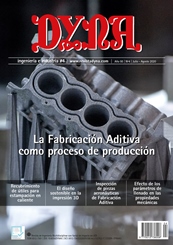INFLUENCE OF OPERATING CONDITIONS ON THE REFINING OF BIOGAS TO PRODUCE BIOMETHANE USING MEMBRANE CONTACTORS
Keywords:
absorción gas-liquido, biogás, biometano, contactores de membrana, upgrading, sustituto de gas natural, biogas, biomethane, gas-liquid absorption, membrane contactors, biogas upgrading, natural gas substituteAbstract
In this paper, the behavior of micro-porous hollow fiber membrane contactors has been studied for biogas upgrading under different operational conditions. Physical solvents, as deionized water and sodium chloride solution, were initially used. In these cases, carbon dioxide absorption was dependent upon liquid phase flow. Sodium hydroxide was subsequently used as a comparative chemical absorption solvent. In this case, CO2 mass transfer increased by increasing gas velocity which was attributed to the excess of reactive hydroxide ions present in the solvent. Under optimum conditions, with two membrane contactors operating in series, it was possible to obtain a gas stream with more than 99% of pure methane using deionized water as solvent. The same yields were obtain with NaOH as solvent, but in this case working with just one membrane module, that is, reducing by half the available surface area for molecules diffusion. At constant liquid to gas flow ratios, better separation behavior was targeted at pressures higher than 2.0 barg. When dealing with solvent reuse without regeneration, NaOH is the only adsorbent allowing a high number of solvent recirculation cycles. This aspect could be very interesting for the economy of the process. Keywords: biogas, biomethane, gas-liquid absorption, membrane contactors, biogas upgrading, natural gas substituteDownloads
Published
2020-07-01
Issue
Section
ARTICULOS

